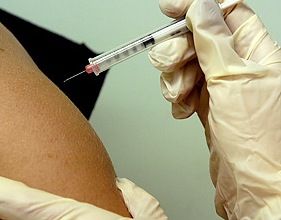CDC Vaccine Rates Rise, But Not Enough, in Adolescents
In at least one particular vaccine, the national rate of initial dose was greater than 80%. The rate to take the booster dose was less than 40%.

The Center for Disease Control and Prevention’s (CDC) results of the 2016 national vaccination rates show an improvement in adolescents from the previous year, but also a persistent gap in certain vaccinations.
According to data compiled by the National Immunization Survery-Teen (NIS-T) and published by the CDC, the adolescent population aged between 13 and 17 years old were estimated to be more covered in every categorized vaccination from 2015.
The vaccines included in the study were initial and catch-up doses of tetanus, diphtheria and acellular pertussis (Tdap), meningococcal conjugate vaccine (MenACWY), and human papillomavirus (HPV).
L.J. Tan, MS, PhD, chief strategy officer of the Immunization Action Coalition — an organization formed to ensure adolescents received standard-practice CDC recommended vaccines — said a threshold for recommended vaccines has been reached, and the organization is ahead of vaccine rate goals it had set for 2020.
However, there’s room for improvements. Less than 40% of adolescents received the recommended “booster” second dose of MenACWY vaccine, a stark contrast from the 82.2% who received the initial dose.
The booster vaccine dose generally comes at age 16, Tan said, and is intended as a mean of “sending 16 year olds into adult health.”
“If they don’t get it, it’s not good for when they go off to college and their risk of exposure is up,” Tan said.
The HPV vaccine series, which is recommended as 3 separate doses, was only completed by 49.5% of girls and 37.5% of boys. Interestingly enough, HPV coverage was reported at a higher rate among adolescents living below the federal poverty level than among those living at or above it.
This is a trend caused by efforts to better cover areas where children and adolescents may not have as good access to vaccines. The CDC’s Vaccines for Children Program covers the costs and burdens of treatment for children in need, Tan said. Though there could be rates of lower vaccination in rural areas, minority groups or low-income family children populations could report greater rates than average.
Where Tan focuses most is the older teen population.
“There’s still a lot of parental guidance and influence in the vaccination progress,” Tan said. “The messaging to the older teens is a little bit different. That’s something we try to pay attention to in our group.”
Part of the issue is emphasizing to teenagers that “they’re not done” following initial vaccines, Tan said. Only the Tdap booster (88%) reported a notably strong rate among teenagers, and it could still improve.
The CDC also reported less than half adolescents received the 2015 flu vaccine.
“We need to be there when they begin to own their own health,” Tan said. “If we did that right, we wouldn’t see that collapse found in young adults.”
It’s a systematic issue that requires systematic response, Tan said. But there’s still positivity to be found in that the numbers have at least raised.
“It’s not like we’ve failed miserably with adolescents,” Tan said.
The annual CDC vaccine report was published online Thursday.
Related Coverage
Baby Boomers Increase HCV Screenings, Treatment When Alert Added to Health Records
FDA Committee to Review Safety of Hydrocodone, Codeine for Children